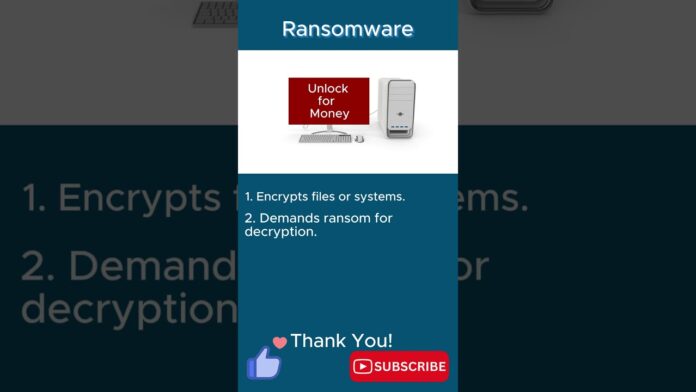In the digital age, few cyber threats strike fear into the hearts of organizations and individuals alike as ransomware does. This malicious software, designed to encrypt data and demand payment for its release, has become a pervasive and lucrative tool for cybercriminals seeking to extort money from victims. In this article, we explore the insidious nature of ransomware, its devastating impact on network security, and proactive measures to defend against this ever-evolving threat.
What is Ransomware?
Ransomware is a type of malware that encrypts files or entire systems, rendering them inaccessible to users until a ransom is paid. This nefarious software typically employs strong encryption algorithms to lock victims out of their data, leaving them with no recourse but to comply with the attackers’ demands.
How Does Ransomware Work?
Ransomware infiltrates networks through various attack vectors, including phishing emails, malicious attachments, exploit kits, and compromised websites. Once executed, ransomware encrypts files on local and networked drives, displaying a ransom note demanding payment in exchange for a decryption key. Victims are often given a deadline to pay the ransom, with threats of permanent data loss or increased ransom amounts for non-compliance.
Types of Ransomware:
- Encrypting Ransomware: This type of ransomware encrypts files on victims’ devices, making them inaccessible without the decryption key.
- Locker Ransomware: Locker ransomware locks users out of their entire systems, preventing access to files, applications, and operating systems until the ransom is paid.
- Scareware: Scareware presents fake warnings or alerts on users’ screens, claiming that their systems are infected with malware and instructing them to pay for bogus antivirus software or services.
Impact of Ransomware:
The impact of ransomware attacks can be devastating, leading to:
- Data Loss: Ransomware can encrypt or delete critical data, resulting in permanent loss or corruption of valuable information.
- Financial Loss: Ransom payments, downtime, recovery efforts, and regulatory fines can impose significant financial burdens on affected organizations.
- Reputation Damage: Ransomware attacks can tarnish organizations’ reputations, erode customer trust, and undermine brand credibility.
- Operational Disruption: Ransomware-induced downtime can disrupt business operations, impair productivity, and cause revenue losses for organizations.
Defending Against Ransomware:
To defend against ransomware attacks, organizations can implement the following proactive measures:
- User Education: Train employees to recognize phishing emails, suspicious links, and attachments, and to follow best practices for cybersecurity hygiene.
- Backup and Recovery: Regularly back up critical data to offline or cloud-based storage solutions and test backup integrity to ensure rapid recovery in the event of a ransomware attack.
- Endpoint Protection: Deploy robust antivirus, antimalware, and endpoint detection and response (EDR) solutions to detect and block ransomware threats at the endpoint.
- Patch Management: Keep operating systems, software applications, and firmware up to date with the latest security patches and updates to mitigate vulnerabilities exploited by ransomware.
Ransomware continues to pose a significant threat to organizations and individuals worldwide, exploiting vulnerabilities in network security and human behavior to extort money and cause chaos. By understanding the nature of ransomware, implementing proactive cybersecurity measures, and fostering a culture of vigilance and resilience, organizations can defend against ransomware attacks and mitigate their impact on network security and business continuity. In the face of this evolving threat landscape, preparedness, collaboration, and adherence to cybersecurity best practices are paramount to safeguarding networks and data from the perils of ransomware.
